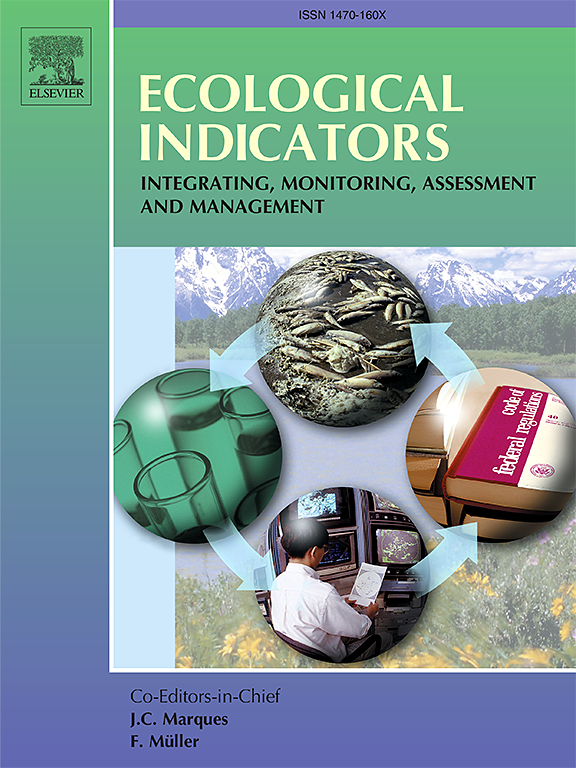Differential aridity-induced variations in ecosystem multifunctionality between Iberian Pinus and Quercus Mediterranean forests
IF 7
2区 环境科学与生态学
Q1 ENVIRONMENTAL SCIENCES
引用次数: 0
Abstract
Forests deliver multiple ecosystem functions and services (i.e. multifunctionality) of great importance to society. However, such multifunctionality capacity is threatened by global warming, especially in Mediterranean forests, which are at high risk of desertification according to climate projections. Certain studies suggest that rising aridity could drastically reduce ecosystem multifunctionality. Yet, the application of this pattern to forests remains uncertain due to their inherent structural complexity and the critical influence of species identity, which make the aridity-multifunctionality relationship not straightforward. Here, we studied 56 plots dominated by four key Mediterranean tree species from Pinus and Quercus genus (Pinus halepensis Mill., Pinus pinaster Ait., Quercus faginea Lam., Quercus ilex L.) along aridity gradients. In each plot, we measured ten ecosystem functions (EFs) such as primary productivity, forest regeneration, biodiversity, decomposition, and nutrient cycling. From these EFs, we assessed shifts in both single-EF and multifunctionality (calculated from averaging and multivariate approaches) across aridity gradients. Our findings indicated that while Pinus forests significatively suffer a multifunctionality loss with increasing aridity, Quercus-dominated forests showed fluctuations in multifunctionality across aridity levels. Forest productivity emerged as a key driver shaping the negative multifunctionality-aridity relationship in Pinus forests. However, the effect of primary productivity was not always synergistic with other ecosystem functions as it has been often assumed and its exclusion from the multifunctionality index calculation did not change the overall pattern of a decrease of ecosystem multifunctionality with aridity. Moreover, a notable loss of ecosystem functional covariation (i.e. interactions between EFs) was found with aridity, more pronounced in Pinus than in Quercus. The contrasting aridity-driven responses in multifunctionality and their EFs interactions between Pinus vs. Quercus forests highlight the fact that distinct management strategies will have to be employed to face climate change and ensure the capacity of these fragile forests to provide essential ecosystem services.
求助全文
约1分钟内获得全文
求助全文
来源期刊

Ecological Indicators
环境科学-环境科学
CiteScore
11.80
自引率
8.70%
发文量
1163
审稿时长
78 days
期刊介绍:
The ultimate aim of Ecological Indicators is to integrate the monitoring and assessment of ecological and environmental indicators with management practices. The journal provides a forum for the discussion of the applied scientific development and review of traditional indicator approaches as well as for theoretical, modelling and quantitative applications such as index development. Research into the following areas will be published.
• All aspects of ecological and environmental indicators and indices.
• New indicators, and new approaches and methods for indicator development, testing and use.
• Development and modelling of indices, e.g. application of indicator suites across multiple scales and resources.
• Analysis and research of resource, system- and scale-specific indicators.
• Methods for integration of social and other valuation metrics for the production of scientifically rigorous and politically-relevant assessments using indicator-based monitoring and assessment programs.
• How research indicators can be transformed into direct application for management purposes.
• Broader assessment objectives and methods, e.g. biodiversity, biological integrity, and sustainability, through the use of indicators.
• Resource-specific indicators such as landscape, agroecosystems, forests, wetlands, etc.
 求助内容:
求助内容: 应助结果提醒方式:
应助结果提醒方式:


